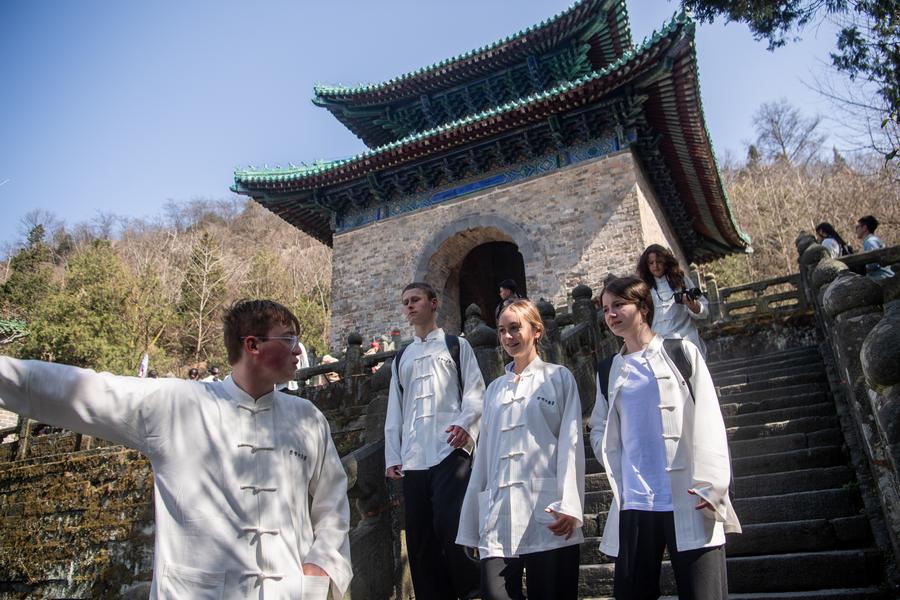Brain Gain to Brain Drain

The U.S. should inspire confidence among its people that their country can attract talent from around the world, rather than adopt a shortsighted mindset that may ultimately undermine the foundation of its global tech leadership.
At 3 a.m. one day in July 1978, when the U.S. and China were in the midst of negotiations to normalize diplomatic relations, Jimmy Carter, the 39th American President received an unexpected call from his science advisor, Frank Press, who was in Beijing. Press conveyed that China was interested in sending 5,000 students to the U.S. for education. Carter responded: “Tell them to send 100,000.”
Three months later, the two countries signed the U.S.-China Educational Exchange Memorandum of Understanding in Washington, D.C. At the height of this exchange in the 2010s, before the onset of the COVID-19 pandemic, the U.S. had 24,583 American students in China and welcomed 350,000 Chinese students.
By the end of 2019, the Institute of International Education (IIE) stated in its annual Open Doors Report on International Educational Exchange that Chinese students contributed over $14.9 billion annually to the U.S. economy. More importantly, China was the largest source of international students in STEM fields (science, technology, engineering and mathematics) in the U.S., with 40 percent of Chinese students enrolled in these majors.
In 2020, among the 34,000 science and engineering doctorates awarded by U.S. universities, 17 percent were granted to Chinese students. Some 90 percent of these Chinese Ph.D. graduates chose to stay and work in the U.S. for at least five years after graduation.
Chinese talent plays a big role in driving technological advancement in the U.S.
This March, the MacroPolo think tank of the Paulson Institute, a non-governmental organization based in Chicago, released an update to its Global AI Talent Tracker survey.
The update revealed that among the top artificial intelligence (AI) researchers in the U.S., 38 percent are from China, surpassing the 37 percent who are American. About 20 percent of the core contributors to the GPT-4 project are researchers from China. GPT-4 is a large multimodal model created by AI company OpenAI that can mimic prose, art, video or audio produced by humans.
The report also pointed out that of the 32 Chinese AI talents who contributed to GPT-4, 21 had completed their undergraduate studies in the U.S., and nearly 80 percent had pursued their graduate studies there.
This year has seen signs of a tentative recovery in China-U.S. relations, highlighted by mutual expressions of interest in increasing student exchanges.

However, senior U.S. officials, including Deputy Secretary of State Kurt Campbell and U.S. Ambassador to China Nicholas Burns, have articulated a more selective approach to welcoming Chinese students.
Specifically, they prefer Chinese students to focus on humanities and social sciences rather than STEM fields. Campbell recently emphasized this point, stating, “I hope to see more Chinese students coming to the U.S. to study humanities and social sciences, rather than particle physics.”
He justified the selective admission policy by noting that U.S. universities are limiting Chinese students’ access to controlled technologies—citing “security reasons.”
There’s a prevailing belief among some American elites that China’s rapid technological development stems partly from appropriating U.S. hi-tech innovations, which has fueled a rise in technological restrictions against China. Consequently, Chinese STEM students in the U.S. have become unintended scapegoats. However, those advocating for the exclusion of Chinese STEM students must consider the changing dynamics: Many Chinese students, who previously sought to immigrate to the U.S. after their studies, now show increasing reluctance to stay.
The narrowing income gap between the U.S. and China to some extent explains why Chinese talents are choosing to return home. Rising anti-China sentiment in the U.S. is another factor.
In 2018, the Donald Trump administration initiated the controversial China Initiative, which broadly categorized research activities by Chinese nationals and Chinese Americans as potential espionage.
A 2023 study by Yu Xie, Director of the Center for Contemporary China Studies at Princeton University, published in the Proceedings of the National Academy of Sciences journal, revealed that during the three years the initiative was active, around 150 Chinese scholars were investigated, 24 were criminally charged, and many faced inquiries.
Though suspended in 2022, the initiative’s lingering effects continue to be felt. Since last November, there have been 10 incidents at Washington Dulles Airport involving Chinese students being questioned and deported following visa cancelations. This further undermines the U.S. ability to attract Chinese talent.
Over the 45-year history of China-U.S. diplomatic relations, educational exchange has served as a bridge connecting both sides.
As a global hub for talent, the U.S. should inspire confidence among its people that their country can attract talent from around the world, rather than adopt a shortsighted mindset that may ultimately undermine the foundation of its global tech leadership.
 Facebook
Facebook
 Twitter
Twitter
 Linkedin
Linkedin
 Google +
Google +










